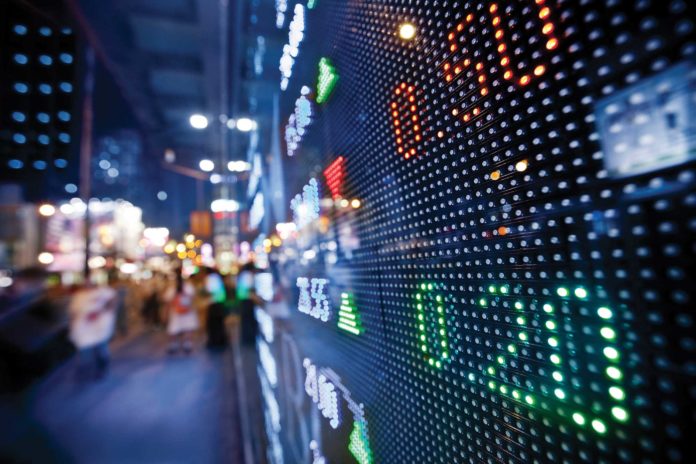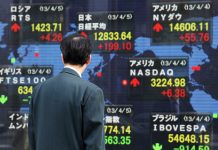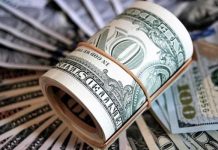
SHANGHAI: Asian shares fell on Tuesday as a relief rally petered out amid rising doubts over whether China and the United States will be able to resolve trade differences.
An inverted U.S. yield curve also raised concerns about a possible recession.
MSCI’s broadest index of Asia-Pacific shares outside Japan fell 0.3 percent as Chinese equity markets struggled to move out of negative territory.
Chinese blue-chip shares in Shenzhen and Shanghai were slightly weaker, and the benchmark Shanghai Composite index edged barely higher. Shares in Hong Kong lost 0.3 percent.
Australia shares gave up 0.8 percent and Seoul’s Kospi fell 0.6 percent, while Japan’s Nikkei stock index was 1.3 percent lower.
The temporary freeze on further hostilities in the trade war between the United States and China had sparked a global rally in equity markets on Monday, pushing MSCI’s all-country world index up 1.3 percent.
But even before the trading day ended, major U.S. indexes pulled back from intraday highs as investors pondered unresolved issues between the two countries.
Overnight, the Dow Jones Industrial Average closed 1.13 percent higher, the S&P 500 gained 1.09 percent and the Nasdaq Composite added 1.51 percent.
Already, there was confusion over when the 90-day period would start. A White House official said it started on Dec. 1. Earlier, White House economic adviser Larry Kudlow told reporters it would start on Jan. 1.
Moreover, none of the commitments that U.S. officials said had been given by China, including reducing its 40 percent tariffs on autos, were agreed to in writing and specifics had yet to be hammered out.
Adding to worries over the outlook for the global economy, the yield curve between U.S. three-year and five-year notes, and between two-year and five-year paper inverted on Monday – the first parts of the Treasury yield curve to invert since the financial crisis, excluding very short-dated debt.
Analysts expect an inversion of the two-year, 10-year yield curve – seen as a predictor of a U.S. recession – to follow suit.
On Tuesday, the yield on benchmark 10-year Treasury notes to 2.9407 percent compared with its U.S. close of 2.991 percent on Monday. The two-year yield US2YT=RR also fell, but by a narrower margin, touching 2.8028 percent compared with a U.S. close of 2.833 percent.
That put the spread between 10-year and two-year Treasuries at less than 14 basis points, its flattest level since July 2007.
However, he added that solid U.S. manufacturing data released Monday pointed to a stronger economic outlook, with new orders a “key driver” in boosting activity.
In contrast to how Asian equity markets could not sustain Monday’s rally, oil prices continued to rise after surging 4 percent the day before on the U.S.-China trade truce, and ahead of a key OPEC meeting expected to lead to supply cuts.
U.S. crude was 1.2 percent higher at $53.58 per barrel, and Brent crude LCOc1 futures gained 1.1 percent to $62.35 a barrel.
In the currency market, the dollar index, which tracks the greenback against a basket of peers, softened 0.2 percent to 96.808.
The dollar was 0.3 percent weaker against the yen, at 113.28, and the euro gained 0.2 percent to $1.1373.
As the dollar weakened, China’s yuan continued to surge. Since Friday, it has added more than 1,000 pips against the greenback, reaching 6.8545 on Tuesday morning. At 0327 GMT, it was trading at 6.8613 to the dollar.
Federal Reserve Chairman Jerome Powell was scheduled to testify on Wednesday to a congressional Joint Economic Committee, but the hearing was postponed because of a national day of mourning for U.S. President George H.W. Bush, who died on Friday.
The dollar came under pressure last week on Powell’s comments that rates were nearing neutral levels, which markets widely interpreted as signaling a slowdown in the Fed’s rate-hike cycle.
Spot gold jumped on the weaker dollar, trading up 0.40 percent at $1,235.88 per ounce.






















